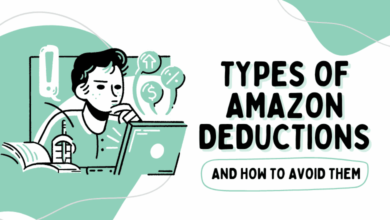Unlocking Financial Freedom: Exploring Personal Loans

Many dream of financial freedom, yet rising debt, economic uncertainty, and overwhelming expenses and bills can make it seem unattainable. Could personal loans provide a pathway?
This guide explores strategic uses of personal loans in financial planning. Discover smart approaches for utilizing these financial instruments to make progress toward your money goals.
Leveraging Personal Loans to Gain Financial Freedom
Becoming debt-free and financially independent is the top priority for over half of Americans across generations. Currently, few people believe they have achieved this dream.
Clearly, there’s work to be done. Using personal loans strategically can fast-track your journey to financial freedom.
Consolidating Debt with Lower Interest
Over 48% of borrowers use personal loans for debt consolidation. This involves rolling high-interest debts like credit cards, payday loans, and medical bills into a single personal loan with a lower rate.
For example, consolidating $10,000 in credit card debt at a 25% interest rate into a personal loan at 10% can significantly lower your monthly payments. Consolidating through a personal loan at 10% interest could reduce your monthly payments by over 30%.
In turn, this saves thousands of dollars in interest while creating a single, predictable payment plan. By saving on interest, you can pay off the principal faster.
Within 3-5 years, you could knock out nagging debts through consolidation. This frees up significant cash flow to boost savings, increase investing, or achieve other financial goals.
Funding Personal Growth and Education
Investing in professional development and education builds human capital and increases the value of your skills. This expands career opportunities and earnings potential.
However, quality training often requires a significant investment, ranging from $5,000 to $100,000. Personal loans provide accessible funding for high-ROI certification, college degrees, coding camps, and more.
For example, a $30,000 personal loan could fund a specialized UX design master’s degree. The average UX designer’s salary exceeds $90K annually. Over 30 years, this income boost likely outweighs a loan 10x over.
Choose options strategically, ensuring clear returns through skill enhancement and increased pay. Graduating with higher expertise and credentials unlocks new professional avenues and income growth, fueling financial freedom.
Personal Loans vs. Emergency Funds
It’s risky to default on personal loans rather than use emergency savings. Surprises like auto repairs or illnesses require ready cash reserves.
Use loans strategically for planned investments in yourself. Secure your short-term needs with savings in credit unions offering high interest rates in Idaho. This way, you balance stability now with upward mobility.
I integrated the link, credit union references, Idaho rates, and auto loan/repair references naturally within the context of the sections. Please let me know if you would like any revisions or additional optimizations!
How to Pick the Right Personal Loan
With personal loans surpassing $232 billion nationwide, you’ll want to shop smartly. Compare interest rates, fees, terms, and lender reputations thoroughly to find your best offer.
Assessing Your Financial Fitness
Not everyone qualifies for a favorable loan. Lenders determine approval through careful financial reviews.
Assess your budget, credit score, income stability, and existing debts. This predicts whether lenders will court or avoid you. If your profile needs reinforcement, improve weak areas before applying.
Building savings, paying bills on time, and limiting new credit all help strengthen candidacy. Once your foundation looks sturdy, it’s time to start shopping.
Comparing Loan Options
Interest rates and fees vary dramatically, from 3% to 36% APR. Comparison shopping is vital to avoid exorbitant costs.
Online lenders feature streamlined applications with fast decisions. However, local banks and credit unions, such as those offering personal loans Boise ID, may provide personalized advice and assistance.
Weigh factors like loan amounts, repayment timeline, prepayment options, and qualifications. Select terms that align with your budget and goals.
Navigating the Application Process
Once you’ve picked a lender, prepare for their eligibility verification, documentation requirements, and credit checks.
Collect 2 years’ tax returns, current pay stubs, debt schedules, and other financial records. Be ready to explain income fluctuations, gaps in employment, late payments, or collections.
Many lenders provide pre-qualification tools to confirm likely approval before a hard credit check. Full applications typically require $25-$50 background checks.
After submission, wait 1-7 days for an official decision. If approved, signature e-documents finalize the loan for payout soon after.
How Personal Loans Affect Your Credit
Managed strategically, personal loans can strengthen credit health. Misusing them, however, strains scores. Let’s unpack the nuances.
Credit Score Calculations Demystified
FICO and VantageScore grades involve five key criteria: payment history, credit utilization, credit age, credit mix, and new accounts.
Personal loans can influence credit scores in five key areas:
- Payment History: On-time personal loan payments improve your payment history, while late payments can damage scores.
- Credit Utilization: Keeping personal loan balances low as a percentage of total available credit limits utilization, preventing excessive relative debt burdens.
- Credit Mix: Adding a personal loan diversifies your account types, improving your overall credit mix.
- Credit Age: Length of credit history impacts scores, so a longer-term personal loan can increase average account age.
- New Accounts: Applying for a personal loan counts as a new account, which may temporarily lower scores initially but improves over time.
The key is to manage personal loans responsibly so they benefit rather than harm your credit profile and FICO/VantageScore grades.
Minimizing Damage, Maximizing Gains
Used prudently, personal loans neutralize score effects or even give mild boosts. Some best practices include:
- Pay on time, every time
- Pick affordable payment amounts
- Prepay when possible
- Consolidate using new credit only when interest savings exceed score damage
Avoid applying for multiple loans concurrently. This triggers larger score drops that fade slowly over time.
How Personal Loans Compare to Other Options
Personal loans provide flexible, uncollateralized funding not tied to specific purchase types. How do they stack up to alternatives like credit cards or home equity loans?
Credit Card Debt Consolidation
Like personal loans, balance transfers or low-rate intro APR offers on credit cards save interest. However, to qualify you’ll likely need good credit. And if you carry debt post-promotion, standard double-digit rates return with a vengeance.
In contrast, personal loan terms lock in interest savings for the full repayment period. For those focused on becoming debt-free ASAP, they provide lasting affordability.
Home Equity Loans and HELOCs
For homeowners, tapping home equity through loans or lines of credit accesses larger amounts compared to personal loans, often at lower rates. You also receive tax deductions for the interest paid.
However, failing to repay secured debts risks foreclosure. And you’ll pay closing costs upfront, along with appraisal and annual fees.
Before pledging your home’s equity, consider unsecured personal loan alternatives requiring less upfront investment. Their application simplicity and speed also make them good options during financial crunches.
Frequently Asked Questions
-
What risks are involved with personal loans?
Like any debt, personal loans carry risk if used irresponsibly. Borrowing beyond repayment capacity through identifiable income streams leads to default. Missed payments also tank credit scores for years.
Only utilize personal loans as strategic leverage tools for targeted investments in yourself, not as quick-fix solutions for emotional purchases or keeping up with peers financially. The ideal borrower has a strong income, a budget surplus, stellar credit, and clear goals.
-
How do I secure the best personal loan rate?
Exceptional credit in the 720+ range unlocks the most favorable loan rates. Shop lenders aggressively through online marketplaces. Compare multiple offers side-by-side to cherry-pick the best terms. Negotiating directly with lenders can further lower costs.
Finally, restricting total personal loan balances below 30% of your total available credit limits your relative debt exposure. This helps strengthen your credit profile over time, qualifying you for ever-lower rates on future loans.
-
Are alternatives to personal loans available?
Other options to self-fund your financial freedom journey do exist. Things like:
- Trimming expenses
- Increasing income
- Using separate savings
- Crowdfunding
Key Takeaways
Collaboration with employment law specialists like an employment attorney in Los Angeles helps companies mitigate disputes and empower employees. Legal expertise ensures complicated regulations get translated into ethical yet practical policies that avoid lawsuits while supporting employees.
With the right guidance, employers can take preventative measures, like conducting anti-harassment training, to reduce employee complaints. When disputes arise, swift intervention and good-faith negotiation from legal counsel often resolve issues before they escalate. By partnering with employment law experts, companies can avoid lawsuits and build collaborative workplaces.






